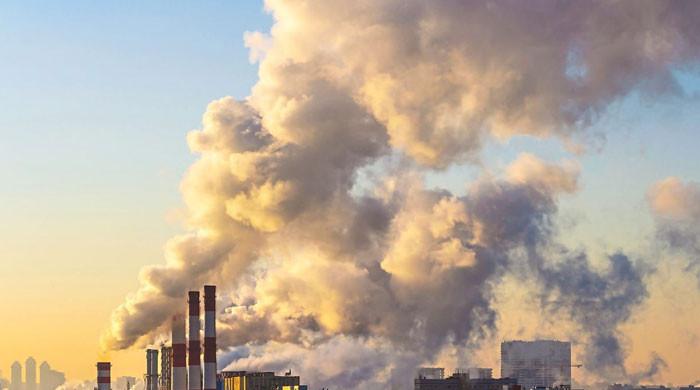 Punjab government has declared a smog emergency for a month to combat pollution in the province
Punjab government has declared a smog emergency for a month to combat pollution in the provinceLAHORE: Small industrial units and factories using tires and plastic as fuel, farmers burning crop residues in suburban districts, and brick kilns working without zigzag technology are mainly responsible for turning Lahore into one of the most polluted cities in the world, experts believe.
On the second of November, a broad day in the capital city of Punjab, clouds of smog seemed to conceal tall buildings and huge heritage monuments.
A flood of people on motorbikes seemed to push through it as they rode. It reeked of diesel and charcoal, compelling families to run their day-long business. Air pollution and smog, a major public health problem across the globe, were causing the death of an estimated 128,000 people annually in Pakistan, the Global Alliance on Health and Pollution said in its recent report.
Lahore’s air quality index has deteriorated badly over the past two decades, a period during which an estimated 70% of its tree-cutting was carried out to make way for residents, housing schemes, developmental projects, and industrial units.
Dr Khalid from Services Hospital said that a lot of factors influence the impact of smog on public health and general well-being. However, the most vulnerable to the hazardous effects of smog include individuals with heart disease, coronary artery disease, or congestive heart failure, individuals with lung diseases, pregnant women, outdoor workers, elderly citizens, children under the age of 14, players, and athletes who work vigorously outdoors.
The Punjab government has declared a smog emergency for a month to combat pollution in the province, making it mandatory for all school students to wear masks. The action was taken following the Lahore High Court issued a direction for immediate measures to control hazardous air quality.
The Environment Protection Department (EPD) said in its statement that under the emergency measures, strict action would be taken against people failing to sprinkle water on gravel, debris, and construction material to avoid dust. Continuous efforts to curb smoke emissions from vehicles and factories were also ordered.
The UN’s Food and Agriculture Organisation (FAO), in its report, revealed that public vehicles still run predominantly on a type of highly polluting sulphur-laden gas that contributes around 40% of the air pollution in Lahore and the surrounding cities and villages of province.
The Air Quality Index (AQI) remained unhealthy in the provincial metropolis on Thursday. The AQI calculations of five categories of pollution, including particulate matter, ground-level ozone, carbon monoxide, sulfur dioxide, and nitrogen dioxide, reached an unhealthy level. The AQI rate was recorded between 192 and 200 in the early morning on Thursday, Met Office sources told APP.
Meanwhile, according to EPD Director Naseem-ur-Rehman Shah, 62 factories have been found contributing to smog in Lahore by using harmful materials like plastic waste, tires, rubber, and old clothes as fuel. The Special Branch police have sent a letter to the Lahore commissioner, suggesting action against officers responsible for the operations of such factories.
Mahmood Khalid Qamar, a noted environmentalist said that obviously the AQI was clearly indicating an alarming level of smog threat in the capital of Punjab province, adding that the air in Lahore was very unhealthy. An AQI as high as 192-200 is considered unhealthy, while an AQI rating between 201 and 300 is more harmful and an AQI over 300 is dubbed extremely hazardous.
Meanwhile, Qamar said that smoke produced by the burning of crop residues, shoe factory waste, use of unrecommended coal, and burning of trash black oil, and tires is deteriorating the atmosphere. Environmentalist Kashif Salik said that an increased trend in air pollution in winter, change in the wind speed, its direction, and sliding minimum temperature, increases air pollution.
The air becomes heavier in the winter as compared to summer, causing poisonous particles including toxic oxides in the atmosphere to move downwards and making the atmosphere polluted, Kashif Salik said, adding, as a result, a thick layer of polluted particles, including large amounts of carbon and smoke, can cover any mega city easily.





No comments:
Post a Comment
My name is Adnan Shahzad I am a Graphic Designer. and Virtual Assistant.Writer.Freelancers.Photographer.YouTuber Servicess.Provider.